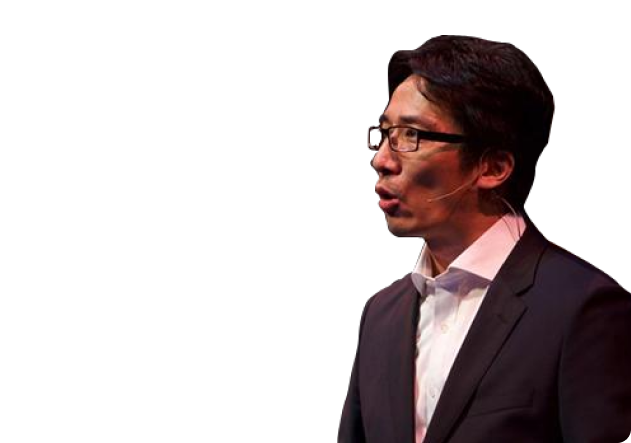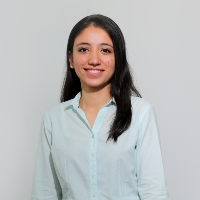Good Design is needed for better future
The future of design is likely to be shaped by a number of technological and cultural trends. Design trends will showcase...",

C.J. Yeh is a creative director, artist, educator, and author. He has won multiple teaching awards as a professor of Creative Technology and Design at FIT, including the SUNY Chancellor's Award for Excellence in Teaching, the FIT President's Award for Faculty Excellence, and the Adobe Educators' Choice Awards. Yeh's research interests include the practices, theories, and history of digital art.
Yeh is the founder of Cynda Media Lab, an award-winning interdisciplinary design studio. Cynda Media Lab's client list includes Google, legendary composer Alan Menken, and GUND. As an expert in branding and digital product design, Yeh has been awarded the Communication Arts Typography Award, the HOW International Design Award, and the iF Design Award. Yeh has had solo exhibitions at the Queens Museum of Art, The Museum at FIT, and the Museum of Contemporary Art, Taipei.
He has also lectured extensively around the world, speaking at the National Taiwan Museum of Fine Arts, Cornell University, the United Nations, and TEDx.
We would love to know your thoughts.
Ans : To me, design is about solving problems in a creative and innovative way, and making the world a better place. It is an intellectual and imaginative process that leads to the creation of something new, purposeful, and aesthetically pleasing. I believe that design can be used to improve people's lives in a variety of ways, such as by making products more user-friendly, creating more sustainable environments, and promoting social justice.
Ans : My process of working on my designs varies depending on the project, but there are a few general steps that I follow. First, I try to understand the problem that I am trying to solve. What are the user's needs? What are the challenges my client is facing? What are the constraints of the project?
Once I have a good understanding of the problem through research, I start brainstorming ideas. I collect inspiration from a variety of sources, including other designers, art, nature, and everyday objects depending on the project. Once I have a few unique directions, I start sketching and prototyping. I iterate on my designs until I find something that I am happy with. Finally, I present my designs to the users and clients to get feedback. I use this feedback to refine my designs until I am confident that they are the best possible solution.
Ans : I find my flow state when I am working on something that I am passionate about. So, one of the most important first steps for me is to be able to see the world through the target users' or audiences' eyes. When I establish that empathy through research and interviews, I will be able to feel passionate about solving the problem for them.
Once I am in a flow, I am completely focused on the task at hand and I am able to work for hours without getting tired. Unlike some designers who prefer to work in a distraction-free environment, I actually don’t mind working in an active and even noisy environment. When I am in a flow, I can block out most of the distractions. However, once in a while, external distractions could stimulate my imagination which leads to something new or different.
I also find it helpful to take breaks when I am feeling overwhelmed, such as going for a walk or taking a few minutes to relax. Many times ideas and solutions come to me when I am in motion like walking or driving. I am not sure why, but it is probably a combination of external stimulants and the fact that I can’t “executive” so I am forced to “think” rather than “do.”
Ans : I feel that my research and ideation process is intellectual. There are several design thinking methodologies that I practice to maximize my understanding of the problem space before I start thinking about possible design solutions. My imagination takes over when I move to design execution and come up with unique design solutions. During the evaluation and testing phase, the intellect takes over again to understand what works and what doesn’t. So, it is an iterative process between the two.
Ans : Feedback is incredibly valuable to me. It helps me to see my work from a different perspective and to identify areas where I can improve. Similar to artists, a designer must have a vision for the project. Something that you are willing to push forward without any compromise. However, understanding what and how others see your creation is critical because the goal is to create something meaningful and purposeful for them.
Ans : I find inspiration in a variety of sources, including other designers, art, nature, and everyday objects. I am always looking for new things to inspire me. I am very open to new ideas, and I am always intrigued by things that are different. Once I have some ideas or motifs, I start ideating which is the most fun and exciting part of the design process for me. I love continuing to challenge myself by asking why, why not, and what if.
Ans : The future of design is “phygital,” meaning a deep integration between physical reality and digital space. You can see this movement in retail space designs. More and more, rather than seeing retail spaces as points of purchase, brands are adapting immersive experience design to focus on creating a memorable and engaging shopping experience. The goal is to create a sense of excitement and discovery through immersive technologies to provide convenient and personalized service. As technology continues to evolve, we can expect to see even more innovative and engaging ways for brands to connect with consumers in the physical world. There are many examples of successful multi-sensory brand experience designs such as Farfetch's Store of the Future and Nike Live store.
Ans : I get inspiration from a wide variety of things ranging from movies, music, history, mythologies etc. Most importantly, I am inspired by the power of design to make a difference in the world. Whenever I see great designs that are difference-makers, I am extremely excited and motivated.
Ans : I think it is important for designers to collaborate with other disciplines, such as engineering and business. This can help to ensure that designs are not only aesthetically pleasing but also functional and practical. By working together, designers can create solutions that are better for everyone.
Most importantly, I think we should redesign design education. Design is a powerful tool that can be used to make a difference in the world, but way too many design schools and programs focus on just aesthetics. We should use design education to teach youngsters creativity to solve problems and use their passion to inspire other.

Senior Consultant
Leave your details so we can contact you back.